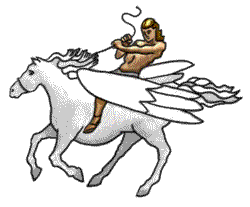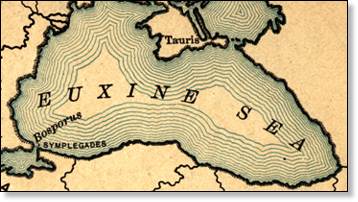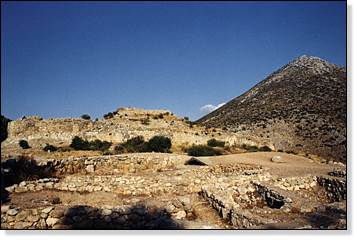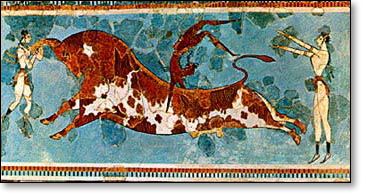
| A B C D E F G H I J K L M N O P Q R S T U V W X Y Z |

| Bellerophon on Pegasus. By Guy Fiore. |
|
Bellerophon (buh-LAIR-uh-fon). Grandson of Sisyphus, tamer of the flying horse Pegasus and heroic vanquisher of the Chimaera, a monster so fantastic that it has entered our language in the adjective chimerical, describing the improbable product of a wild imagination. At Mythweb, see the illustrated myth of Bellerophon.
|

The Black Sea was known to the ancient Greeks as the Euxine. The word literally means "hospitable." It was probably a euphemism (a mild word substituting for a harsh reality).
|
| |

The archaeological site of Mycenae, a kingdom of the Bronze Age.
|
| |

A bull-leaper somersaults over the back of a charging bull, while another grabs the horns in readiness to leap. Fresco from the Minoan palace of Knossos on the island of Crete in the Aegean Sea.
|
| |
|
bull-leaping. Acrobatic feats performed over the horns and back of a bull. From abundant archaeological evidence it is clear that some sport or ceremony involving acrobats and bulls was practiced in ancient Crete. And from the myth of Theseus, one might conclude that the acrobats were captives or sacrificial victims, whose athleticism and timing might have spelled the difference between gory death and popular adulation by the Knossos throngs.
|
| A B C D E F G H I J K L M N O P Q R S T U V W X Y Z |
|
|
|
|

|
|
|